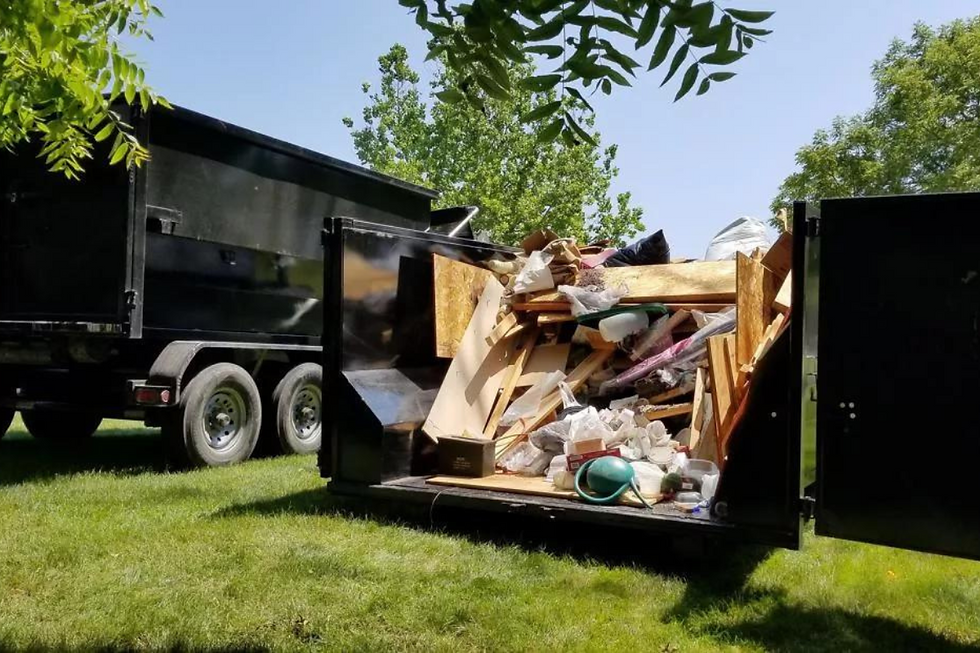How to Safely Dispose of Brush After Clearing: A Comprehensive Guide
- Campbell Junk removal
- Aug 22, 2024
- 4 min read

Clearing brush from your property can enhance the landscape, improve safety, and prevent pest infestations. However, once the job is done, it's essential to dispose of the waste properly and safely. Brush disposal involves more than just tossing it in a pile; incorrect methods can cause environmental harm, attract pests, and even violate local regulations. This article provides a comprehensive guide on how to safely dispose of brush after clearing.
Understanding the Types of Brush
Before tackling disposal, it’s important to differentiate the types of brush you might have:
1. Green Brush: Freshly cut branches and green vegetation that have high moisture content.
2. Dry Brush: Dead plants, twigs, and dried branches that are often more flammable.
3. Invasive Species: Certain plants that can spread quickly in your area, potentially harming local ecosystems.
Understanding these categories will help determine the best disposal method since some methods, like burning, may not be suitable for all types.
Safety First: Precautions to Take
Before starting the disposal process, consider these safety tips:
· Wear Protective Gear: Safety goggles, gloves, long sleeves, and sturdy boots protect you from sharp branches and potential allergens.
· Identify Hazardous Materials: Check for any poison ivy, thorny plants, or other hazardous vegetation you may need to handle with extra care.
· Follow Local Regulations: Research local laws regarding brush disposal to ensure you comply with any regulations in your area.
Disposal Methods for Brush
Here are several safe and effective methods for disposing of brush:
1. Chipping
Chipping is one of the most environmentally friendly disposal methods. It reduces brush into small chips that can be reused as mulch or compost.
· How to Chip:
o Rent or purchase a wood chipper suitable for your brush size.
o Feed branches and twigs into the chipper, ensuring safety precautions are followed.
· Benefits:
o Creates beneficial mulch that can improve soil health.
o Reduces the volume of waste significantly.
2. Composting
If the brush consists mainly of green waste, you can compost it. Composting returns nutrients to the soil and reduces waste sent to landfills.
· How to Compost:
o Chop smaller pieces to help them break down faster.
o Layer with other compost materials (greens and browns) to maintain a balanced compost bin.
· Considerations:
o Avoid composting invasive species or diseased plants, as they may spread.
3. Burning (if allowed)
Burning brush can be an efficient disposal method, but it’s crucial to follow local laws and safety guidelines.
· How to Burn:
o Only burn if it’s permitted in your area; check local regulations.
o Choose a safe, clear area away from structures and flammable materials.
o Create a controlled burn by building a fire pit.
· Safety Tips:
o Have a hose or shovel nearby in case the fire spreads.
o Monitor the fire closely until it is completely extinguished.
4. Landfill Disposal
In some cases, taking brush to a landfill may be the simplest option. Many landfills have designated areas for yard waste, including brush.
· How to Utilize Landfill Services:
o Check local landfill policies regarding brush disposal.
o Load the brush into a truck or trailer for transport.
· Benefits:
o Quick and straightforward; many landfills accept brush without hassle.
5. Municipal Yard Waste Collection
Many municipalities have yard waste collection services, providing a convenient option for disposal.
· How to Use This Service:
o Contact your local waste management provider to learn about their services.
o Properly bundle brush according to local regulations (i.e., size limits, weight restrictions).
· Benefits:
o Often free for residents; helps the community manage waste effectively.
Recycling Options
Some areas offer special recycling programs for organic waste, including brush and yard debris. These programs turn waste into valuable compost or mulch.
· How to Find Recycling Programs:
o Research local recycling centers or compost facilities.
o Follow guidelines for drop-off and collection.
Additional Considerations
1. Invasive Species Disposal
If you’ve cleared invasive species, do not compost or chip them, as they can spread. Instead, follow these steps:
· Bag and tag invasive plants before disposing of them at a landfill or municipal facility.
· Consider contacting local environmental or conservation groups for specific guidelines.
2. Hire Professionals
If the brush clearing and disposal task feels overwhelming, hiring professionals might be the best option. They have the equipment and expertise to handle brush disposal safely and efficiently.
· Benefits of Hiring:
o Saves time and effort.
o Ensures compliance with waste disposal regulations.
o Reduces the risk of accidents or improper disposal.
Maintaining Your Landscape
Once you’ve disposed of brush properly, consider preventive measures to keep your landscape clear:
· Regular Maintenance: Schedule periodic brush clearing to prevent overgrowth.
· Mulching: Use wood chips or mulch to inhibit weed growth and reduce the need for future brush clearing.
· Plant Selection: Choose native plants that require less maintenance and are less likely to become invasive.
Conclusion
Safely disposing of brush after clearing is essential for maintaining a clean and healthy outdoor space. Whether you choose to chip, compost, burn (if permitted), take it to a landfill, or utilize municipal services, always prioritize safety and environmental responsibility. By understanding your options and following local regulations, you can effectively manage brush disposal while contributing positively to your environment and community. Taking the time to handle brush correctly will not only enhance your property but also support sustainable practices for years to come.







Comments